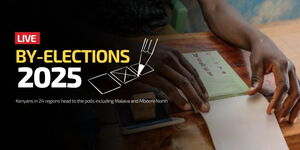The High Court has dealt a blow to the government after it nullified its earlier directive, which banned the live coverage of the June 25 demonstrations through the Communications Authority.
Justice John Chigiti ruled that the case, which was filed by the Katiba Institute, did not merit the government, as it was unlawful and unconstitutional, quashed it in its entirety, and prohibited the Communications Authority and any other state agency from enforcing it.
The ruling means that the government will, going forward, have no power to order a shutdown or ban coverage of live broadcasts of demonstrations.
On June 25 this year, the Law Society of Kenya (LSK), the Kenya Editors Guild (KEG), and the Katiba Institute went to court to challenge the CA's decision to stop live coverage of the protests and switch off free-to-air.
The three argued that the CA's directive had contravened three key constitutional rights of Kenyans, including freedoms of expression, media, and information under Articles 33, 34, and 35 of the Constitution.
The developments followed after CA had ordered all television and radio stations in the country to stop live broadcasting of the then June 25 demonstrations.
CA's Director General, David Mugonyi, stated that covering the protests contravened both the Constitution and section 461 of the Kenya Information and Communications Act.
"This is therefore to direct all television and radio stations to stop any live coverage of the demonstrations forthwith. Failure to abide by this directive will result in regulatory action as stipulated in the Kenya Information and Communications Act, 1998," the then directive read in part.
The CA issued the ban following claims that the media were covering instances of chaos without following the Programming Code. However, human rights groups contested this, arguing that it was an attempt to cover up state excesses and police brutality.
In a continued victory for freedom of expression, the High Court in August last year ordered all police officers to wear uniforms and display nametags while managing protests. This ruling followed a case challenging the use of balaclavas by police during demonstrations.
Further, the judge directed the National Police Service not to obscure the identification, registration, or markings of any motor vehicle used by authorities during protests.
The suit came after some protesters accused NPS of allowing their officers to wear face masks while enforcing apprehensions during the anti-Finance Bill 2024 protests.












